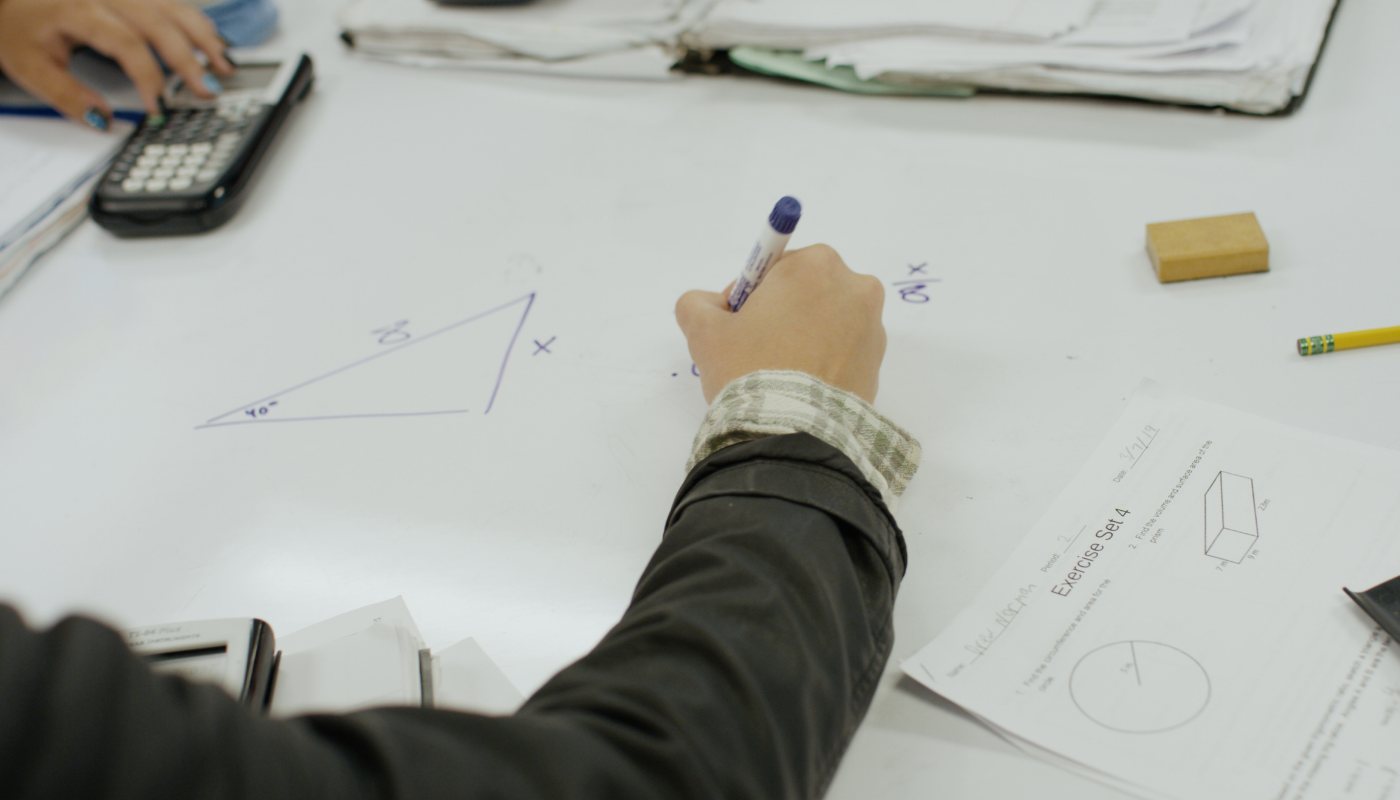
For 19 years, I taught Geometry the same way every year. I will never do so again.
That’s because my classroom experience during the 2020-21 school year—my first time teaching math through the Summit Learning program—was by far the most effective of my career.
My math classroom at Decatur Community Schools in Oberlin, Kansas, was so much more engaging, student-centered, and active than in previous years. I was able to connect more with students and help them become mathematical thinkers. It was invigorating, week after week.
By the end of the school year—a time when I’m typically drained and want to unwind—I felt re-energized and had a real passion for mastery-based learning.
Throughout the year, my class time was dedicated to learning in an active way. My students learned through measuring, investigating, and discovering mathematical properties. There were also several mathematical discussions and debates that occurred, helping them work through problems together. In short, they were actively doing math!
Under my old classroom methods, my class time was very teacher-centered. We would spend most of the class having the kids take notes and work on procedures. Students who were highly motivated, had strong memorization skills, and applied repetition well were able to succeed in that more traditional classroom environment. But many other students through the years seemed bored or felt that math wasn’t a subject they could be successful in, because it required skills that weren’t their strengths.
That all changed last year when we adjusted our learning approach and it continues to be a positive development at the start of this school year. My class time is now focused on helping students figure out math actively. Many students who might not have been successful in the past are actually enjoying math now because of these highly engaging practices—such as understanding why properties work through investigations and mathematical discussions—that target deeper levels of learning.
Along with changing how I teach math, Summit Learning has helped change the way I build my expectations for students. By using student-centered methods, I can focus on mastery learning that is set at a unique pace for each student. This is a big difference from my teacher-centered and teacher-paced learning style of the past.
Under my old—and admittedly very strict policies—I expected students to take notes about concepts, take the assignments home, and then turn in their homework the very next day. This resulted in unintended consequences.
Many kids who struggle—because of academic deficits, low self-esteem, or a lack of support from home—felt defeated before they had really even started my math lessons. Rigorous deadlines led some to fall behind early in the school year and it was tough to catch up.
Others couldn’t keep pace because of time-obstacles, such as an after-school job or participating in athletics and extracurricular activities.
But there are several ways that Summit Learning has helped address those concerns. Above all else, it is a student-centered program that encourages revision and growth. Students have the opportunity to reflect on their work, go back, seek clarification, and try again. Students truly have the power of choice for how much they want to push themselves, and how much they want to improve.
Now, when a student hits a roadblock (such as a friend/family issue, illness, work schedule, etc.), they know that they can return to the math concept a few days later and attempt to demonstrate greater mastery. The pressure to quickly turn in an assignment has been relieved.
Summit Learning has helped me recognize that learning looks different and happens at a different pace for every child. The idea behind this new way of strategizing as an educator—that a student can always work to improve, even if they are a few days behind their peers—is a powerful life skill.
I have more students who demonstrate perseverance in the face of frustration on a daily basis. I have more students who feel empowered by the opportunities to go back, revise, and attempt to improve on their previous work. These mindsets and habits are precisely what we want to see from adults, too.
As a 20-year teacher who always enjoys helping my students learn, I feel rejuvenated by this past year. I can’t wait to continue to focus on each individual student and ensure that they find success in math through active, mastery-based learning.

